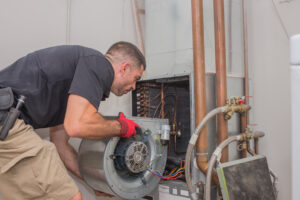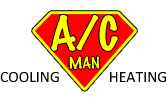Understanding How An Houston AC Works
The basics of how the air conditioner (AC) works is by collecting hot air from the surrounding and then cooling it down before realizing it back into the same space. The AC does this using five installed components, which are:
- Evaporator
- Refrigerant
- Compressor
- Condenser
- Expansion valve
How The AC Works
Picture yourself standing outside on a hot summer day, or you are out and about running an errand. The sun feels like it has dropped closer to the earth, and the heat is unbearable. However, you still manage to find some reason to bear it all since you know you will find some reprieve when you get inside your air-conditioned office or home.
You get to the doors and you are hit by a gust of chilled air when you step inside the office or home. It sends every cell in your body in jubilation, making you feel at ease and better than when you wear baking outside under the sun.
The AC brought out the “cooling revolution” that people can never discount. The journey to what we have today may have seemed to have been a long one. But we are thankful for the generations that used fans and other creative methods of cooling their houses on hot days. The current technology does borrow from the old, but it is significantly more effective when it comes to sheer cooling capacity.
But how do the air conditioners function? We shall be looking into this and see how they do it and why they have become a must-have for many urban regions.
Parts Of An Air Conditioner
When it comes to deciding which AC system to install, you will have to pick between two choices; the split systems ACs, and the Window systems ACs. The two options are then subdivided into either the central systems or the mini-split systems.
Irrespective of the installation type you pick, the AC will have four principal components:
1. Evaporator
This is a heat exchanger coil tasked with collecting heat from the surroundings in a room for it to be directed to a liquid refrigerant. The name comes from the fact that it is where the refrigerant absorbs the heat and then released back into the room as a cooled gas.
2. Compressor
As the name suggests, it is where the gaseous refrigerant gets compressed. The compressor is mostly located in an outside unit which is installed on the exteriors of the building.
3. Condenser
The compressed vaporized refrigerant then proceeds to the condenser where it is converted back into liquid state as the compressor expels the heat. The condenser is also located in a unit installed in the exterior of the building. It is a common feature with the split ACs.
4. Expansion Valve
It is also called the throttling device. It is located between two coils, which are the heated coils of the condenser and the cooling coils of the evaporator. The expansion valve is meant to control the flow of the refrigerant to the evaporator.
For the Window ACs, the components mentioned above are fitted in a small metal unit that is fixed in a window opening. The four form the primary features of the air conditioner.
How Do They Work Together?
The AC will draw in hot air from a given area and then processes it to cool it down before releasing it back into the room. It relies on freon (liquid refrigerant) and several coils to generate the chilled air that it pumps into a given space where is it installed.
The average person thinks that the ACs depend on machines installed inside the unit that produces the cold air needed for cooling a room. They believe this is so because of the electricity the air conditioners consume. All that is a misconception; there is no magic to how the air conditioner works. It only relies on a chemical and a few other physical features to do what it does in your home or office.
To enjoy the benefits of having an AC fitted in your office or house, you need to turn it on, set the desired temperature, and then the thermostat in it will read this and help to manage the functions of the AC to achieve the desired room temperature by cooling the room’s air.
By design, the air conditioning system will draw in hot air through a grille installed at the base of the indoor unit. The air is then directed to the coolant liquid via pipes in which the fluid circulates. The refrigerant will absorb the heat and be vaporized. In the same process, the evaporator coils also absorb moisture from the incoming air, and this process dehumidifies the room.
The heated coolant gas is then pushed to the compressor that is fitted in an outside unit where it is compressed. It is a process the increases the gas’ temperature. The then heated gas, which is also highly pressurized travels to the condenser. That is where the vapor then condenses into a liquid.
When the refrigerant reaches the condenser, it is a hot gas that is rapidly cooled to become fluid as the heat is dissipated to the outside through metallic fins. The refrigerant will then proceed from the condenser when it is back in its liquid state. It then flows through the expansion valve that is designed to control the flow of the coolant into the evaporator, which is where the refrigerant started its journey.
That is the same principle in both the Window ACs and the Split ACs though the latter has separate units installed inside and outside the house, while the former is one unit with all these components installed inside.
As the air conditioning system run, it repeats this process over and over until it achieves the desired room temperature. That means that the AC will continuously draw in the warm air and expel chilled air into a given space, thereby cooling the room until the present temperature is attained.
When the ACs were initially developed, they were not intended for human comfort. We have become overly dependent on these devices, but they were originally meant for the publishing companies to help eradicate certain issues in the manufacturing processes. How these machines intended to support the large-scale publishing of papers become an integral part of the modern office and home is another story for another day.
Give us a call or contact AC Man of Houston today with any inquiries!
